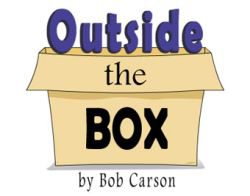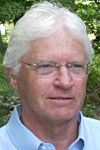Christmas Echoes
December 17, 2018,Editor’s Note: The USTA website is pleased to present freelance writer Bob Carson and his popular “Outside the Box” features. This monthly series is a menu of outlandish proposals presented with a wink — but the purpose behind them is serious. The views contained in this column are that of the author alone, and do not necessarily represent the opinions or views of the United States Trotting Association.
Christmas evenings, many of us find ourselves in warm, bright houses, looking through frosted windowpanes into the darkness. If we pause, if we squint and look deeply, on the other side of the glass we see the faces of those who have traveled before us. For fleeting moments, we see aunts, uncles, friends, and parents who gently taught us lessons we may or may not have learned.
In our sport, we see people who raced horses, who raised horses, and who wagered on the races. We see the shadows of racehorses great and small. Christmas is a time for telling stories about these people and these horses.
Let me tell you a story about a man, and miraculously, crack open the frosted window so you can see him on the other side of the glass. If you see him, using modern technology he will tell you another story.
 About 15 years ago, I met a man named John Stewart, a singer/songwriter born in 1939. He was tall, talented, quirky, and handsome. You may have a slight memory of John Stewart as a performer, especially his years as a member of the Kingston Trio. More likely, you are familiar with songs he wrote like Daydream Believer and Runaway Train.
About 15 years ago, I met a man named John Stewart, a singer/songwriter born in 1939. He was tall, talented, quirky, and handsome. You may have a slight memory of John Stewart as a performer, especially his years as a member of the Kingston Trio. More likely, you are familiar with songs he wrote like Daydream Believer and Runaway Train.
Ironically, his biggest hit as a performer was in 1979 with a top ten single, Gold. He stopped performing it because he felt it was empty and that he recorded it merely to please a record company. For five decades, John Stewart (sometimes known as Johnny Moonlight or the Lonesome Picker) traveled America and Europe with his guitar; his pockets filled with dreams and his head filled with songs.
John Stewart was from an earlier generation, but his music spoke to me. When he was nearby, I would attend his performances. In venues large and small, I always enjoyed the evening. The last time he was in my area we had an opportunity to meet and talk. Somehow, the subject of harness racing slipped into our conversation.
His eyes grew wide and he became animated. His gravelly voice went up an octave and he could not talk fast enough.
“My dad was a harness horse trainer and I grew up as a vagabond on the racing circuit in California. Dad was a hard, distant man and the boys in the tack room sort of took me in. They were my friends, sort of a buffer.”
He waved his hands as he continued, “I remember the smell of horses, of pulling my brother around in a creaky, wood sulky. I remember the people on the backstretch. When I began to write songs, I would sit on the grass near the training track and use that rhythmic pounding of the hooves as a sort of crude drum machine. Oh, what a world that was back then for a young boy.”
I had all of his many, many albums (well over 40), but it was not until after our conversation that I combed through them and noticed how many of his songs referenced his racetrack years and his love of horses and horse people. It would be an easy task to compile an album of songs about racetracks, horses, and gamblers.
John Stewart was a traveling troubadour until the end, an end that came 10 years ago.
One of his last performances and perhaps one of the last songs he sang, as the flickering flames of Alzheimer were licking at his heels, was at a small club named the Town Crier in New York. The magic of YouTube opened for me one of those frosted windows to the past. I stumbled upon a posting from a concert that I had never seen.
Mother Country, the song he performs, is a true story. The song is a historical perspective of our love of country (perhaps useful in these politically polarized times) and the second half of the song is a look back at a harness horse trainer he recalled from his racetrack life. For those of you who have spent time in a jog cart, you will hear the echoes of hooves in the baseline and you will see the faces on the other side of the glass.
To view the video, click on this link.
I hope you enjoy the video.
Thanks for reading.
Happy Holidays,
Bob

